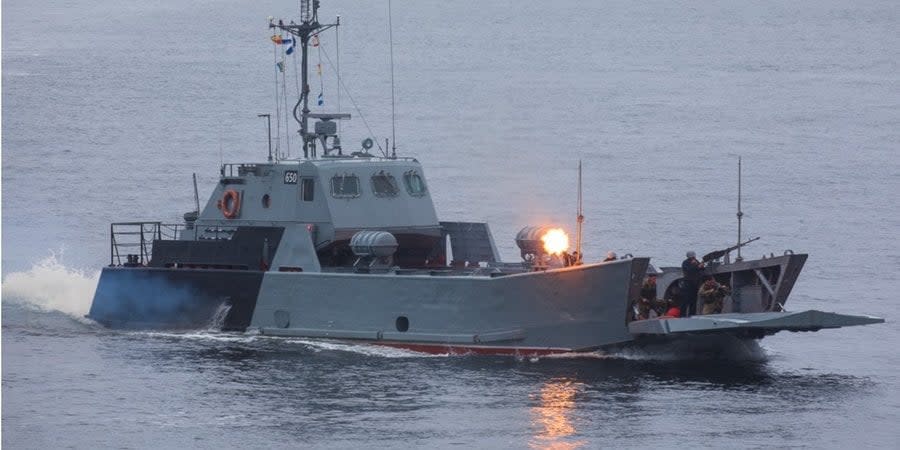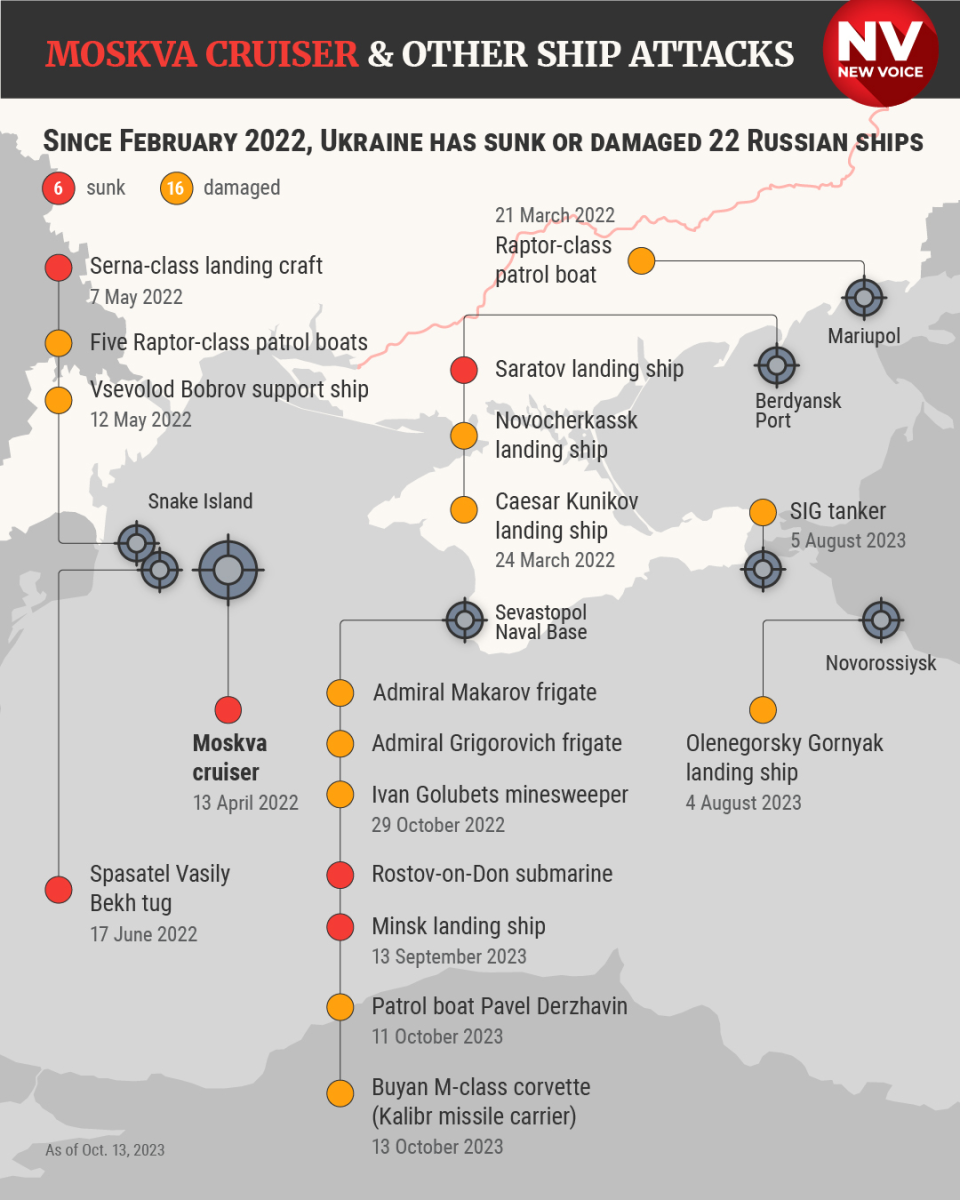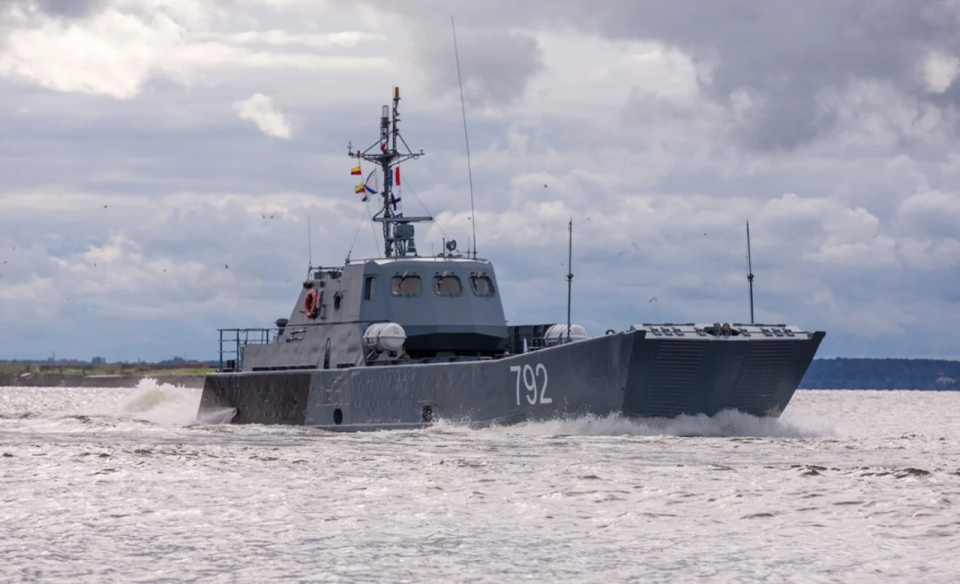Ukraine attacks more Russian landing craft in Crimea, crippling naval landing operations

Two more Russian landing craft were added on Nov. 10 to the list of Russian Black Sea Fleet ships that Ukraine has destroyed or damaged.
Officers of Ukraine’s Main Intelligence Directorate or HUR conducted a successful overnight operation in the occupied Crimea, hitting the landing craft, which were moored near the village of Chornomorske on the Tarkhankut Peninsula in occupied Crimea.
Read also: Russians take 'operational pause' after Ukrainian army strikes Kerch shipyard
The HUR showed a video of the destruction of two small landing craft – one a modern Serna class and the other an older Ondatra class vessel. The HUR said that at the time of the strikes the landing craft were carrying crews and loaded armored vehicles, including BTR-82 personnel carriers.
NV explains what kind of vessels they are and how Russia used them in the full-scale invasion of Ukraine.
In total, as the infographic below shows, since the beginning of the invasion, the Ukrainian Armed Forces have already destroyed at least seven and damaged at least 18 Russian vessels from several navies.

A fast-moving means of landing troops and equipment: what makes the Serna class boats special
The Serna amphibious assault boats (Project 11770) are a relatively new type of fast ship in the Russian fleet. They began to be built in the 1990s, and as of 2013, before the first invasion of Ukraine, Russia had built only eight of them at the shipyard in Nizhny Novgorod.
Read also: Russian warship damaged in Nov. 4 missile attack is newly built, not yet part of Black Sea Fleet
The main feature of the Serna-class amphibious assault boats is their method of locomotion via an air cavity system similar to hovercraft. Pressurized air is directed underneath the hull, forming an air bubble that isolates most of the vessel from direct contact with the water.
This "air cushion" reduces hydrodynamic drag drastically by minimizing hull friction, greatly improving the boats' speed. The bottom has a specialized geometry such that increasing air pressure generates and maintains an air cavity that functions as an underwater air gap. With much of the hull thus insulated from the water, hydrodynamic resistance is significantly reduced, enabling far higher speeds than comparable landing craft.
This principle of movement and design gives such boats numerous advantages:
higher speed than other landing craft of a similar type (over 30 knots, i.e. about 60 km/h), although it depends on the vessel's load and weather conditions;
better passability in shallow water;
the possibility of landing on the shore without a pier using a folding ramp.
The Project 11770 landing craft also has an improved water cannon engine instead of conventional propellers. This is a ventilated water cannon engine that has a slightly different design from traditional engines of this type.
The Serna boat, according to its Russian developers, can also be independently removed from the shoal.

The primary function of Serna-class boats is to deliver or retrieve personnel and equipment from shorelines lacking dedicated port facilities. Each boat can transport:
combat vehicles totaling up to 45 tons, including a single main battle tank or two armored personnel carriers/infantry fighting vehicles.
airborne infantry units with weapons and gear. With only troops as cargo, a Serna can embark up to 92 soldiers.
Read also: Video shows moment Ukraine’s Storm Shadow missiles strike Russian Fleet in Kerch
Safe navigation of such boats at full displacement is hypothetically permissible in sea waves of up to 5 points, but the speed would not exceed 8 knots.
These boats do not have their own weapons, although anti-aircraft missile systems can be placed on board.
Over the years, Russia has reported the transfer of Serna-class amphibious assault boats to the Black Sea, Baltic, Caspian, and Pacific fleets.
In addition, Russia has exported such boats abroad, particularly to the UAE and Estonia.
Sernas in the war against Ukraine: how Russia uses the boats and the Ukrainian Armed Forces destroy them
Russia has been using Serna-class small landing boats since the beginning of the invasion of Ukraine. In particular, the Russian military has been actively using them for such purposes, according to Ukraine’s Defense Intelligence:
during the occupation of Zmiyinyi Island (Snake Island) - to transfer military equipment and troops there;
for the landing of advanced marine groups or evacuation;
to provide mobile cover for their groups, in particular, earlier on the Snake Island and other parts of the Black Sea (in this case, Tor-M2 anti-aircraft missile systems were deployed on board the boats);
to cover the ships of the Russian Black Sea Fleet on raids – especially recently, in the context of the Russians' virtual absence of naval air defense capabilities after a series of attacks by the Ukrainian Defense Forces on Russian targets in the Black Sea and Crimea.
Read also: Russian fleet retreating from Crimea, Ukraine advancing on two fronts — ISW
Nov. 10 was not the first time that Ukraine managed to destroy a Russian 11770 project Serna boat.
On May 7, 2022, Operational Command South released a video confirming the destruction of a Russian Serna project landing craft with the help of a Ukrainian Bayraktar TB2 attack drone.
At the time of the strike, the enemy boat was near a pier on the Russian-held Snake Island in the Black Sea. The Bayraktar hit the vessel with a precision-guided munition. At the time of the strike, the boat was carrying Russian servicemen and a Tor surface-to-air missile system.
At the end of May, Russia extracted the wreckage of a Serna boat and a Raptor boat destroyed near Snake Island using five vessels and a self-propelled floating crane.
We’re bringing the voice of Ukraine to the world. Support us with a one-time donation, or become a Patron!
Read the original article on The New Voice of Ukraine

